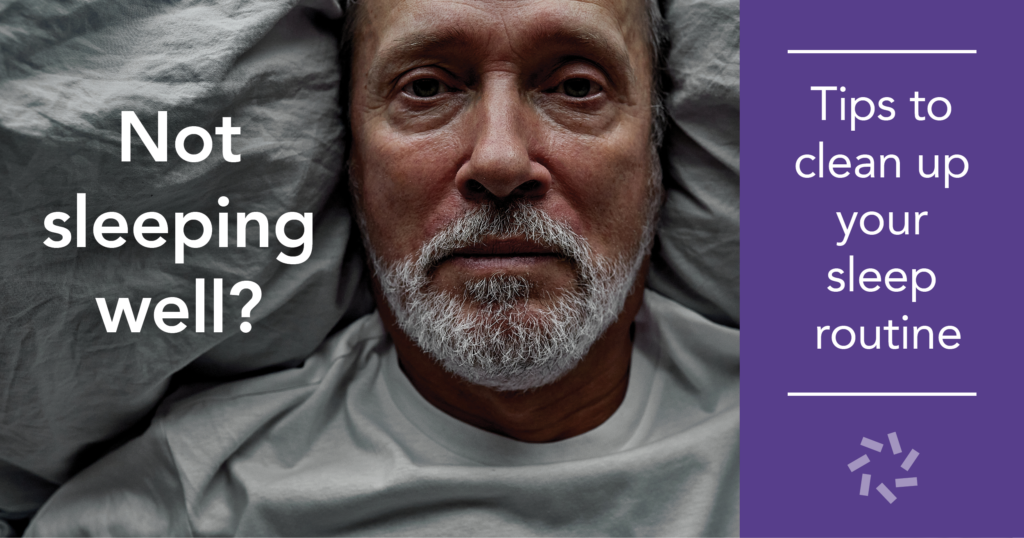
When it comes to practicing good sleep habits, our nation is not doing a very good job, said Dr. Bill Thomas, nationally renowned geriatrician, author, and Lifespark Independence Officer. “It doesn’t matter what part of the country you live in or how old you are, Americans aren’t getting enough healthy, restful sleep,” he said.
Lack of sleep at any age can lead to all sorts of chronic health problems, including diabetes, heart disease, kidney disease, hypertension, stroke, obesity, and depression, but in older adults, poor quality sleep also increases the risk of delirium, falls, and cognitive impairment. Good sleep hygiene by itself can’t eradicate chronic diseases, but there’s plenty of evidence showing that high-quality sleep fights inflammation, strengthens the immune system, and improves mental health, all of which boost our sense of well-being and quality of life.
Redefining “normal”
Before addressing the nuts and bolts of good sleep habits, Dr. Bill believes that we need to change our idea of what “normal” sleep should look like in later life. “Everybody accepts that between the ages of 17 and 87, our bodies keep changing, but for whatever reason, we think that how we slept as adolescents is how we should sleep in our 80s, and that anything short of that is abnormal,” he said. “The truth is, our sleep changes, too.”
To explain these changes, Dr. Bill highlighted three attributes of sleep quality: sleep efficiency, sleep fragmentation, and phase advance.
- Sleep efficiency is the ratio of hours spent sleeping to hours spent in bed. “Sleep efficiency is typically high in younger people and decreases naturally with age,” he said. “The problem isn’t lower sleep efficiency—it’s using sleeping pills to try to counteract what’s actually normal.”
- Sleep fragmentation is repeated, interrupted sleep throughout the night. “Barring an underlying sleep disorder, like sleep apnea or restless legs syndrome, older people often experience several sleep episodes during the night, with periods of wakefulness in between,” he said.
- Phase advance is a shift in the sleep cycle that causes older adults to wake up earlier and go to bed earlier. “Older clients will tell me that something must be wrong, because they get sleepy when everybody else is just getting started, and they wake up when the world is still fast asleep, but again, this is normal in later life,” he said.
Tips for better sleep
Getting better sleep boils down to a few simple things done well, he said. “First of all, your bed should be used only for sleep and intimacy and nothing else: not for eating, not for watching TV, not for scrolling through Facebook, not for reading—except maybe a few pages before drifting off to sleep.”
“Second, get the television out of the bedroom,” he said. “So many people tell me that having the TV on helps them sleep, but in fact, the blue light emitted from TVs, smartphones, computers, and tablets disrupts our natural sleep cycles.”
“Third, understand that alcohol before bedtime interferes with healthy, restful sleep,” he said. “A drink or two might make it easier for you to fall asleep, but alcohol disturbs REM sleep, which is the deep, restorative phase of sleep.” As for caffeine, the effects are highly individual. His advice: if caffeine interferes with sleep, don’t drink it; if it doesn’t, enjoy it.
Not all naps are created equal
A devoted fan of naps himself, Dr. Bill is quick to differentiate between two types of naps. “The first is the healthful 20-minute midday nap, terrific for individuals who are already getting plenty of restful sleep at night,” he said. “The beauty of this type of nap is that it extends alertness, improves mood, and boosts memory, all without disrupting the sleep cycle.”
The second type of nap is more common for people who don’t get enough quality sleep at night and have trouble staying awake during the day. These individuals may take two or three long naps a day, but rather than waking up refreshed, they experience a period of grogginess, disorientation, and even cognitive impairment. Known as “sleep inertia,” this effect can last anywhere from 15 minutes to a few hours. Both long naps and sleep inertia may be signs of poor sleep hygiene or possibly an underlying health problem or a sleep disorder.
Sleep medications and amnesia
Very occasionally, using a sleep aid can be a short-term strategy, but the risks for older people often outweigh the benefits. “There’s an increasing amount of evidence that sleep medications can cause a neurological disorder called transient amnesia, which is a sudden, temporary loss of short-term memory,” he said. “Instead of helping you sleep better, the drugs just make you forget that you were awake.”
The more medications a person is taking, the greater the risk of sleep aid-related memory loss. “Unlike sleep meds—prescription or over-the-counter—good sleep hygiene doesn’t have any known negative side effects or co-pays,” Dr. Bill said.
Prescription for good sleep
Like the effects of caffeine, sleep is highly personal. “People need to figure what works best for them and do that consistently,” he said. “But if you’re having trouble with sleep, you might want to take a look at your sleep habits and your use of sleep aids.”
Finally, Dr. Bill offers the following prescription for healthy, restful sleep: “Wake up in the morning, refreshed and ready to enjoy the day. Get some physical activity, which can help you sleep better at night. Take a 20-minute nap in the middle of the day. Stay up and out of the bedroom until you’re ready to go to sleep—without TV, light, or distractions.”


